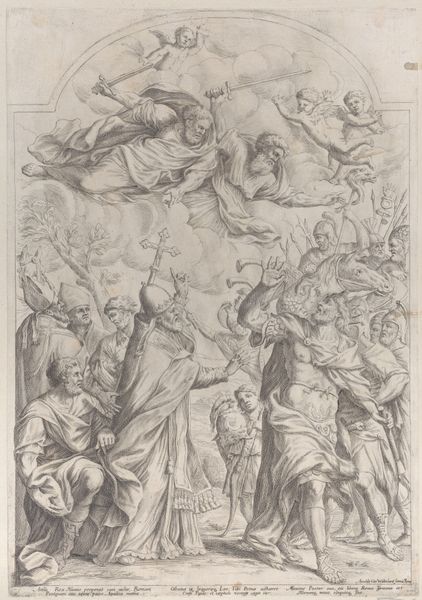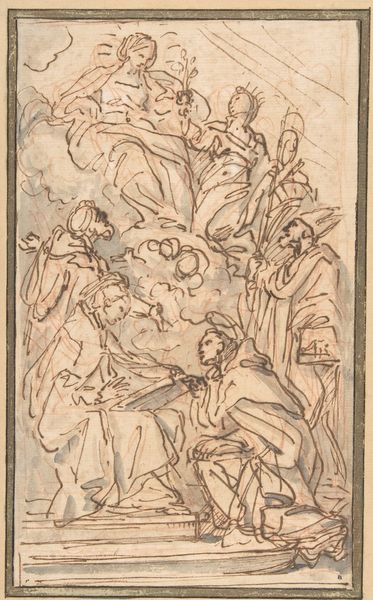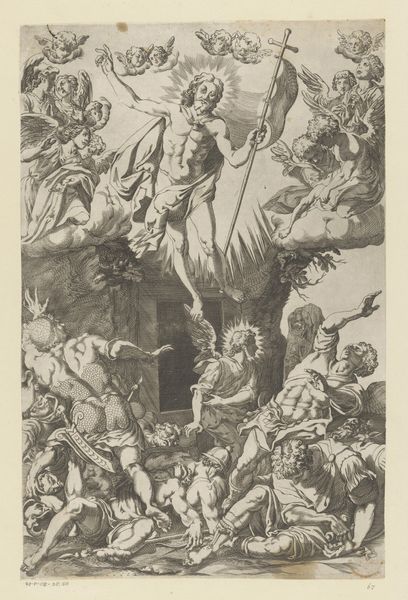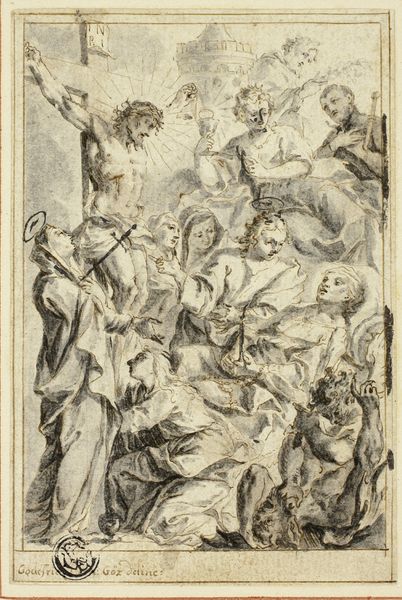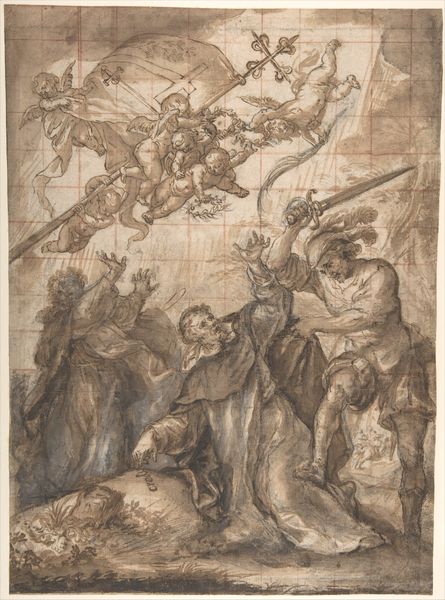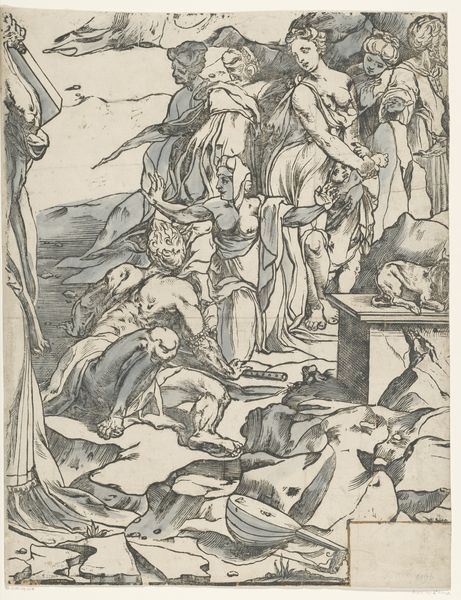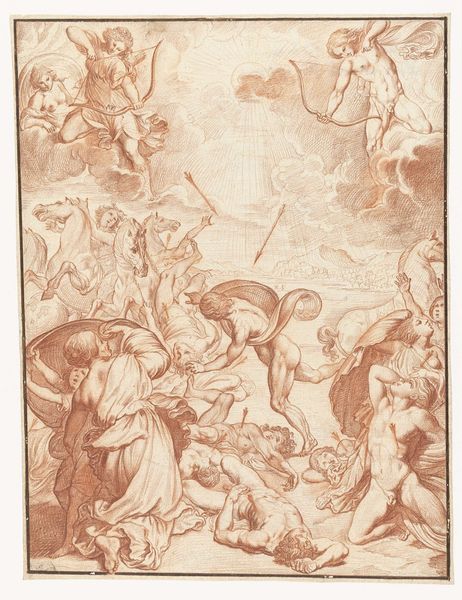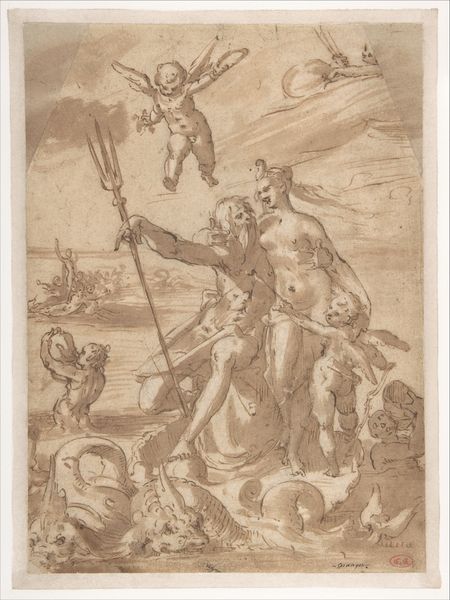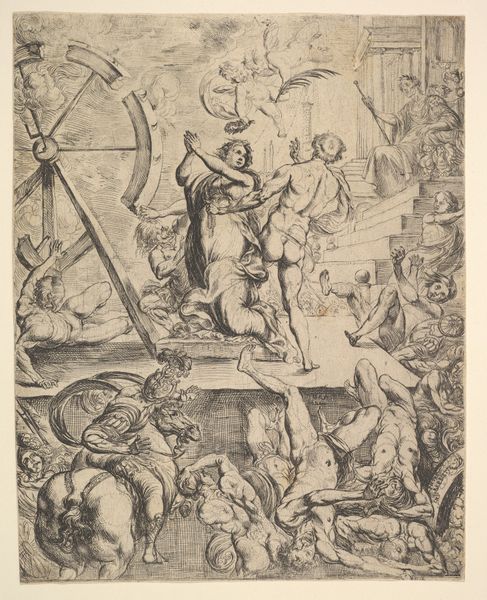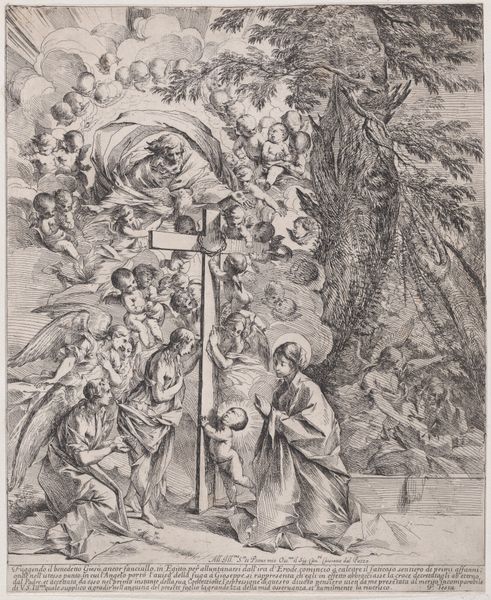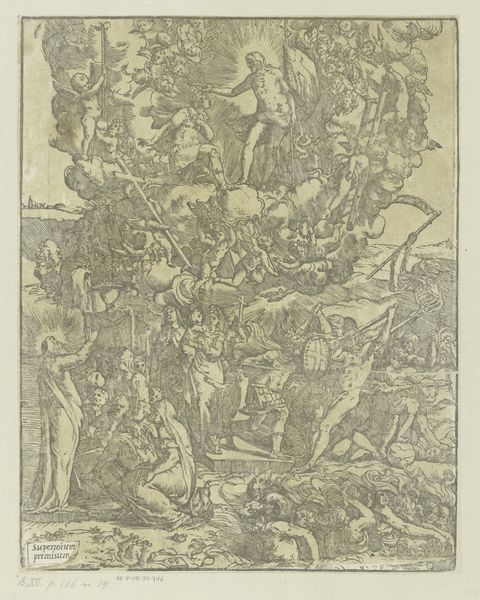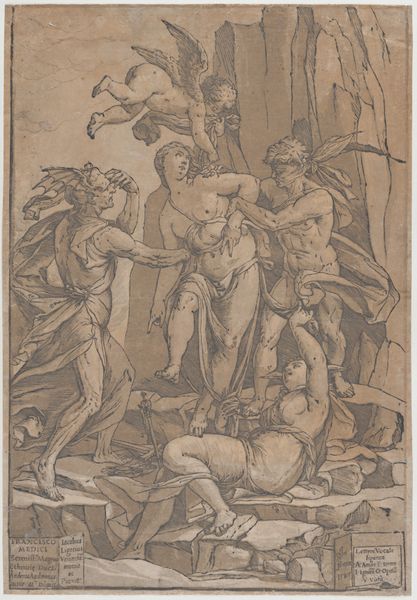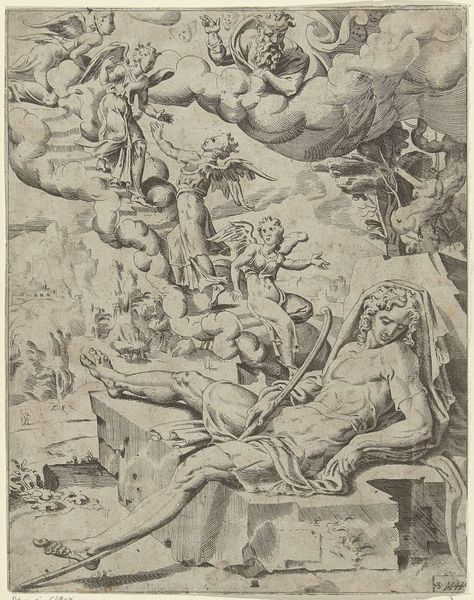
Christ in Glory with Saints Peter and Paul 1723 - 1728
0:00
0:00
drawing, print, paper, ink
#
drawing
#
allegory
#
baroque
# print
#
figuration
#
paper
#
ink
#
history-painting
Dimensions: 253 × 174 mm
Copyright: Public Domain
Editor: This is “Christ in Glory with Saints Peter and Paul,” a drawing made with ink on paper by Johann Franz Caspar, dating to around 1723-1728. It has such a swirling, dynamic energy to it. What do you see in this piece, with all its layers of symbolism? Curator: It’s fascinating how Caspar uses these archetypal figures to explore power and faith. Consider Christ: he's holding a cross, the symbol of sacrifice, but also gesturing outwards as if bestowing a blessing. It becomes about the duality of sacrifice and triumph central to the Christian narrative. Note also Saints Peter and Paul flanking him, representing the foundations of the Church. How do you see them contributing to the central theme? Editor: Well, Peter is on the left with a key and Paul is on the right holding a sword. They both look up at Christ as if witnessing something divine. I guess that represents their individual roles within the church hierarchy. Curator: Precisely. And their inclusion reinforces the earthly implications of Christ's glory, a tangible legacy of spiritual leadership. What's interesting to me is how Caspar depicts the saints actively looking toward Christ while simultaneously rooted to the Earth. Are they literally witnessing something, or are they internalizing the ideals? It becomes a study of devotion. It reminds one of Jung's concept of archetypes or ingrained characters within the collective human consciousness, with Saints Peter and Paul standing in for ideals about how a follower should embrace their belief. Editor: That’s really interesting. It makes me see the piece less as just a historical scene and more about internal ideas that are constantly shaping human consciousness. Curator: Absolutely! This piece reflects a Baroque aesthetic of not just illustrating stories from scripture, but trying to unpack those enduring icons embedded deeply within our cultural memory. It is quite evocative.
Comments
No comments
Be the first to comment and join the conversation on the ultimate creative platform.
